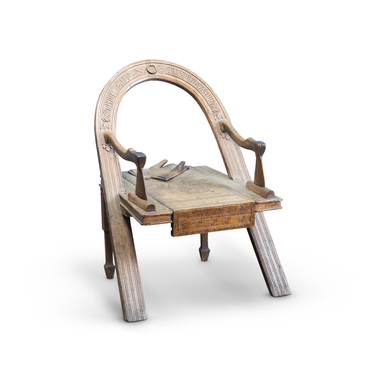In the collection of the Belgorod State Historical and Local History Museum, among woven items a special place is occupied by a homespun rushnyk created in a technique of textured pattern weaving. Its patterns were made with red threads. The rushnyk is decorated with longitudinal stripes, geometric patterns, heraldic eagles and ducks.
In everyday life, the rushnyk occupied a special place: it served as a talisman, covered bread on the table, and decorated icon corners, doorways, and window openings.
Rushnyks are divided into everyday and festive types. The main difference in their appearance is that everyday rushnyks were either not decorated with embroidery at all, or had a few thin colored stripes embroidered on them.
A special feature of the festive rushnyks was rich and complex embroidery, which the well-known researcher Boris Rybakov called a treasury of large and small mythological plots of the ancient Slavic pagan beliefs. Each celebration was accompanied by various ritual actions, in which rushnyks were also used. Every pattern embroidered on the fabrics had a specific meaning and significance. For example, the image of heraldic double-headed eagles symbolized state power. It was believed that the coat of arms, a symbol of the state, would protect the well-being and wealth of the family.
The exhibited fabric depicts several types of heraldic figures. In the upper row, the bird’s wings are raised upwards and fully spread, while the eagle in the lower row has semi-spread wings. Each bird is crowned with one large and two small crowns, which are elements of the coat of arms of the Russian Empire.
Textured pattern weaving was widespread in the Belgorod region. The Russian name for this type of weaving (branoe) comes from the words brat’ (to take) and vybirat’ (to select), meaning that selected threads for the pattern were raised separately from the threads forming the woven fabric. This technique implied the usage of a special rod or board called bralnitsa. Externally, the technique of loom weaving resembled embroidery, as the pattern was raised to create a relief effect. The front and back sides of the loom woven fabrics were negative images of each other, and the fabric typically featured two colors.


